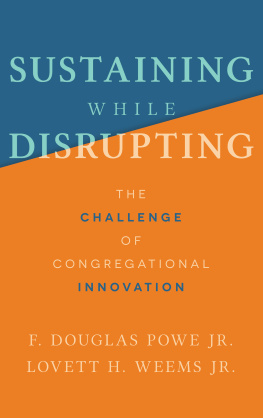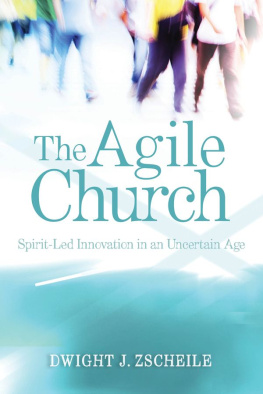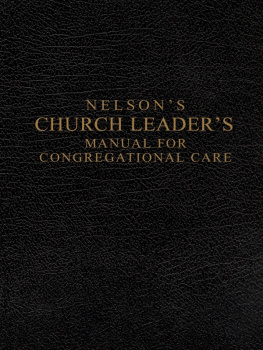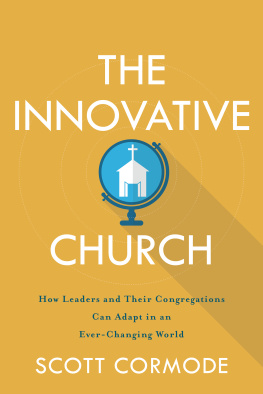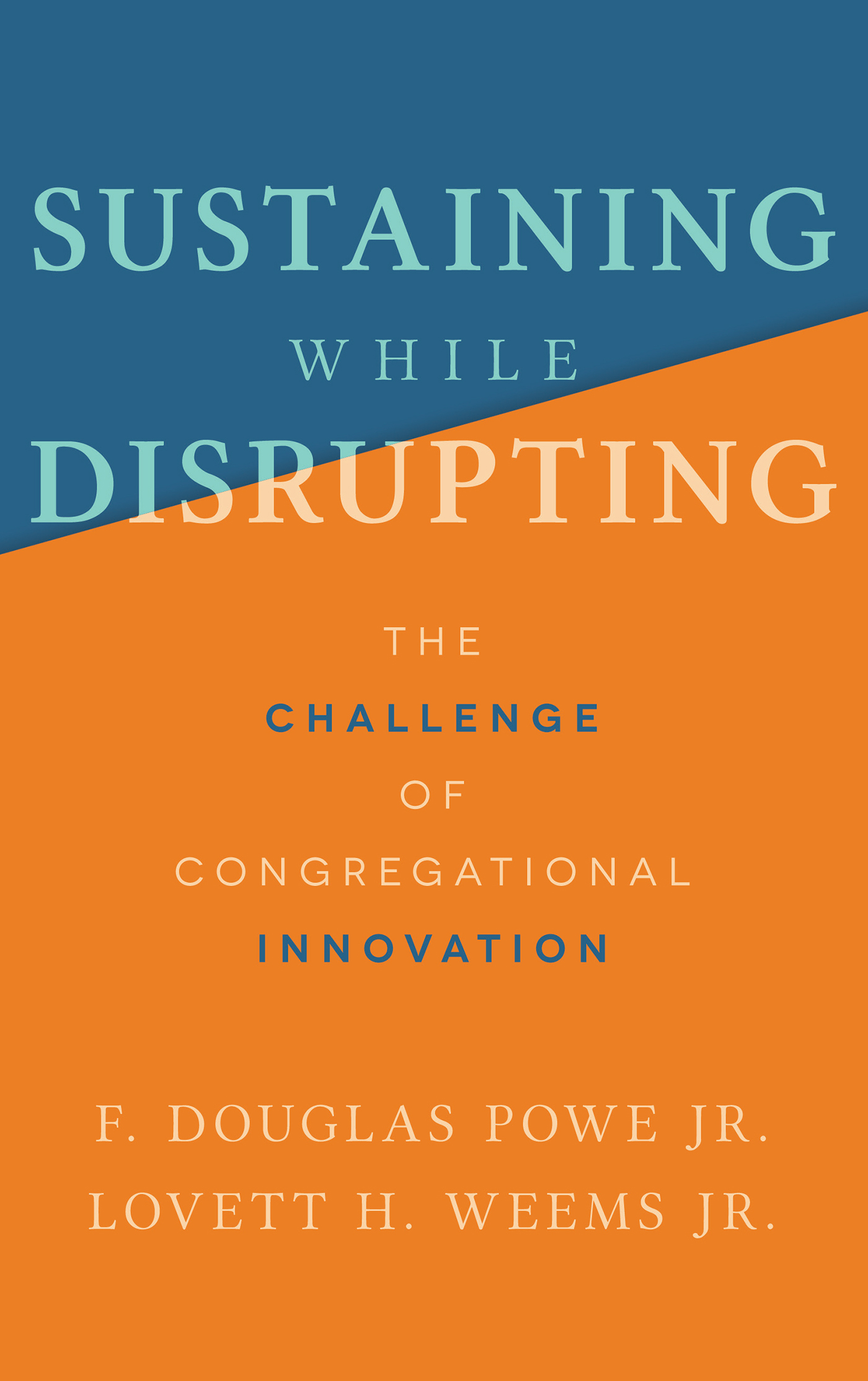
Praise for Sustaining While Disrupting
Aptly titled, this book provides a realistic perspective on the challenges of, to use a metaphor, changing the tires on your car while you are driving on the freeway. Powe and Weems provide a handy, thoughtful, practical, and inspirational book focused on leading churches through todays disruptive environment, rather than playing it safe by continuing a steady decline into obsolescence. The wisdom they provide extends to any for-purpose organization.
Barry Z. Posner, Accolti Endowed Professor of Leadership; chair, department of management and entrepreneurship, Leavey School of Business, Santa Clara University; and coauthor of The Leadership Challenge and Everyday People, Extraordinary Leadership
Sustaining While Disrupting achieves the rare feat of being timely and timeless. The practical tips will be a welcomed by those who love the church but see it struggling to be fruitful today. At the same time, the insights on these pages have the potential to reverberate for generations of church leaders to come. Powe and Weems have offered us a precious gift. May we sit in the tensions of its truth and be compelled toward vibrancy at the nexus point of sustaining while disrupting!
Heber Brown III, executive director, The Black Church Food Security Network
If I could choose one book to give congregational presidents and pastors this year, it would be the one you hold in your hands. Nothing is more important (and more challenging) than leading communities in the practices of sustaining and innovating, both essential to Christian faithfulness. In these readable pages, Powe and Weems provide the biblical grounding, contextual urgency, and practical wisdom for sustaining beloved communities while also disrupting them with faithful innovation.
Ann Svennungsen, bishop, Minneapolis Area Synod, Evangelical Lutheran Church in America
Sustaining While Disrupting is precisely the correct title for this outstanding book. Church leaders know we live in an era of convergence and divergence. This moment is not new for the church. But many books about congregations lean on demographics or business models. Maintaining while innovating is soul work in all realms of life, however, including congregational life. Refreshingly, Powe and Weems use theological reflection as the foundation for a transformative design, shaping their propositions based on the struggles of the council in Jerusalem as represented in Acts. They also offer tools and skills as gifts for the long haul, not a quick fix. Read, discern, act, and celebrate the wide-open future of the church.
Tim Shapiro, president, Center for Congregations
I found myself taking notes in every chapter as I read Sustaining While Disrupting. In a disorienting, pandemic-impacted time, Weems and Powe offer in this timely book clear insights, practical strategies, and abundant wisdom for church leaders on how to take faithful next steps in ministry and leadership.
Tom Berlin, lead pastor, Floris United Methodist Church, and author of Courage: Jesus and the Call to Brave Faith
Sustaining While Disrupting
Sustaining While Disrupting
The Challenge of Congregational Innovation
F. Douglas Powe Jr.
Lovett H. Weems Jr.
Fortress Press
Minneapolis
SUSTAINING WHILE DISRUPTING
The Challenge of Congregational Innovation
Copyright 2022 Fortress Press, an imprint of 1517 Media. All rights reserved. Except for brief quotations in critical articles and reviews, no part of this book may be reproduced in any manner without prior written permission from the publisher. Email or write to Permissions, Fortress Press, Box 1209, Minneapolis, MN 55440-1209.
Scripture quotations, unless otherwise noted, are from the New Revised Standard Version Bible 1989 Division of Christian Education of the National Council of the Churches of Christ in the United States of America. Used by permission.
Scripture quotations marked (NIV) are from the Holy Bible, New International Version, NIV. Copyright 1973, 1978, 1984, 2011 by Biblica, Inc. Used by permission of Zondervan. All rights reserved worldwide. www.zondervan.com The NIV and New International Version are trademarks registered in the United States Patent and Trademark Office by Biblica, Inc.
Scripture quotations marked (ESV) are from the ESVBible (The Holy Bible, English Standard Version), Copyright 2001 by Crossway, a publishing ministry of Good News Publishers. Used by permission. All rights reserved.
Cover design: L. Owens
Print ISBN: 978-1-5064-7920-0
eBook ISBN: 978-1-5064-7921-7
While the author and 1517 Media have confirmed that all references to website addresses (URLs) were accurate at the time of writing, URLs may have expired or changed since the manuscript was prepared.
To the farsighted builders who established the Lewis Center for Church Leadership; to the staff, advisors, and donors who sustain it; and to two visionary seminary presidents, G. Douglass Lewis and David McAllister-Wilson
Contents
The Changed Context for Churches Today
Many congregations with long histories and proud traditions find themselves facing challenges beyond what they have faced in the lifetimes of their members and pastors. Such challenges are most noticeable in those denominations often referred to as mainline, but other churches may recognize that they are facing similar challenges.
After dominating the US religious landscape for much of the countrys history, most mainline churches began declining in size and influence after the mid-1960s. Within the next few years, all the mainline denominations would move from membership growth to decline. The consequences of the massive membership losses spanning over fifty years were mitigated by increased giving. It was not unusual for contributions and assets to increase even as membership and attendance declined. However, the even sharper declines in the first decades of the twenty-first century are receiving the attention of church leaders as downward trends become less sustainable. Money can be a lagging and deceptive indicator for churches, as finances can stay strong well after other indicators turn down. Today, however, income increases can no longer be assumed. Many churches have yet to rebound from the financial recession in the first decade of the new century.
Past success does not guarantee future success. It is hard for well-established organizations to adjust to changing circumstances. Size and age can serve churches well, but as contexts change, these same factors make it difficult for them to adjust to new situations. Nimbleness and heritage do not always appear together. Momentum from past success is likely to make it more difficult for official church leaders to recognize major societal changes. The cherished forms of ministry no longer connect with people in the same way as a half century ago. These practices no longer carry the new wine of new times. Leaders are pressed to preserve the old forms, only making it harder for them, together with their congregations, to discern the new thing God is doing.
Understandings of Leadership
From its beginning, the church has recognized the need for persons to be set apart for leadership within the community. Leadership is essential for religious communities because it is what links past and future. Religious leaders at the same time teach and preserve past traditions and lead the faithful into a future in which those traditions take new shapes to fit new contexts. In this sense, they bridge past and future. Pastoral leadership is set within the context of the ministry that all Christians have through their baptism. Therefore, pastoral leadership is never solely about the personal authority and actions of the clergy but rather about the unfolding drama of the people of God seeking a faithful future for their traditions and communities. Pastoral leaders are central to church leadership but only to the extent that they engage seriously in their tradition, constituents, and context. Pastoral leadership is a response to Gods love and action in the world, revealed most clearly in Jesus Christ. Christian leadership is about the fulfillment of that vision.
Next page
